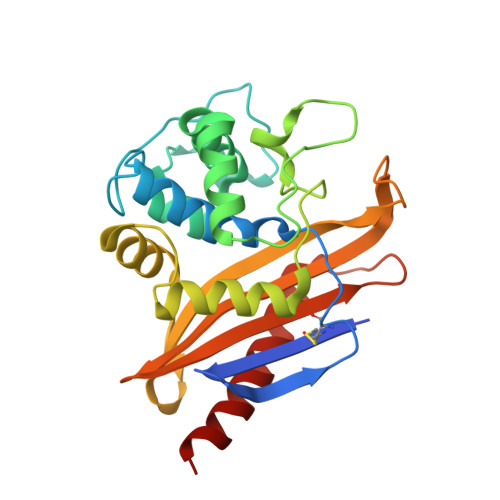Structural and molecular characterization of AmpS, a class D beta-lactamase from Legionella pneumophila.
Gao, J., Liu, T., Lu, L., Zhou, Z., Sun, W., Chen, Y., Xu, W., Wang, N., Ma, J., Ge, H.(2025) Int J Biol Macromol 312: 144174-144174
- PubMed: 40379166
- DOI: https://doi.org/10.1016/j.ijbiomac.2025.144174
- Primary Citation of Related Structures:
9LTK - PubMed Abstract:
In Gram-negative bacteria, β-lactamase enzymes represent one of the most prevalent mechanisms of antibiotic resistance. These enzymes confer resistance by hydrolyzing the four-membered β-lactam ring in β-lactam antibiotics, resulting in inactive derivatives. In this study, we report the 1.9 Å crystal structure of the R215F mutant of AmpS, a class D β-lactamase OXA-29 from Legionella pneumophila. The R215F mutation was designed to mimic the phenylalanine residue present at the equivalent position in E. coli OXA-1, thereby enabling functional investigation of the surrounding region and its role in substrate specificity. Through molecular docking simulations, enzymatic activity assays, and physiological analyses, we characterized the molecular properties of AmpS and its contribution to β-lactam resistance in L. pneumophila. Our findings provide new insights into the function of AmpS, underscoring its contribution to antibiotic resistance and offering a foundation for the development of therapeutic strategies aimed at mitigating β-lactamase-mediated resistance in pathogenic bacteria such as L. pneumophila.
- Institute of Health Sciences and Technology, Institutes of Physical Sciences and Information Technology, Anhui University, Hefei, PR China.
Organizational Affiliation:


















